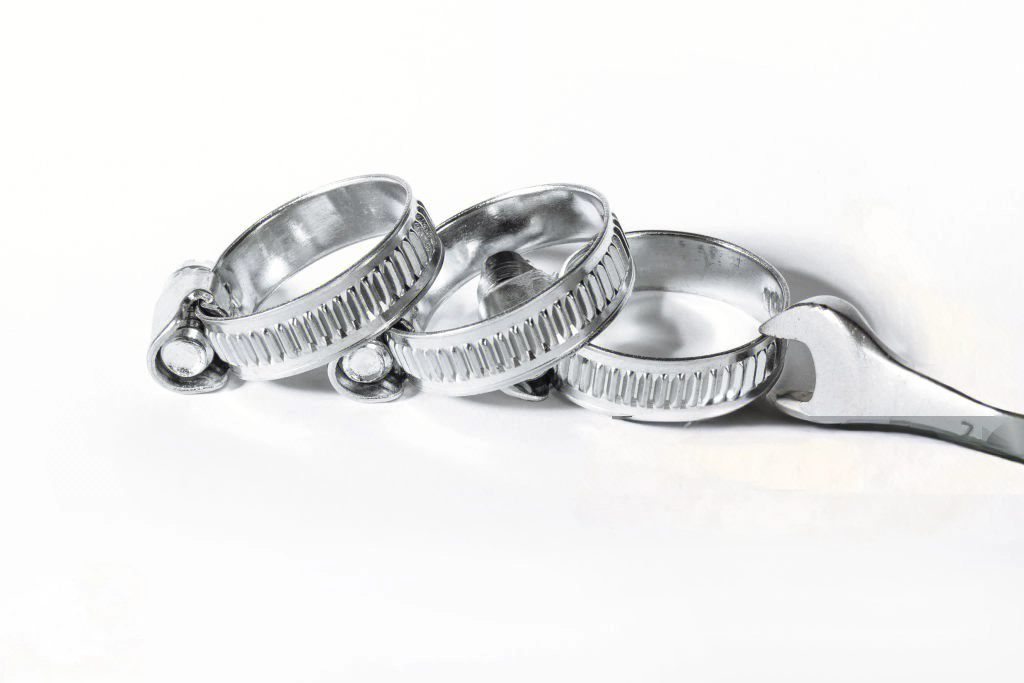
Fuel Line Hose Clamp Size Chart: Find the Perfect Fit & Prevent Dangerous Leaks!
Your vehicle's fuel system is its lifeline. Even a tiny leak can lead to wasted fuel, poor performance, environmental harm, or worst of all – a serious fire hazard. At the heart of securing these critical connections is the humble fuel line hose clamp. Choosing the correct size isn't just about convenience; it's a fundamental safety requirement.
Why the Right Fuel Line Hose Clamp Matters:
-
Harsh Environment: Constantly exposed to gasoline/diesel, engine heat, vibration, and pressure fluctuations.
-
Critical Sealing: Must maintain a leak-proof seal against both liquid fuel and volatile vapors.
-
Safety First: Fuel leaks are a leading cause of vehicle fires. A properly sized and installed clamp is essential protection.
-
Material Integrity: Only high-quality, fuel-resistant materials like specific grades of stainless steel (A2/304, A4/316) should be used. Standard carbon steel clamps will corrode rapidly and fail.
How to Select the Correct Fuel Line Hose Clamp Size (3 Simple Steps):
-
Measure the Hose OUTSIDE Diameter (OD) Accurately:
-
Use calipers or a precise measuring tape.
-
Crucial: Measure the hose AT THE END where the clamp will sit (often a slightly larger, reinforced section), not along the main hose body.
-
Double-Check: Measure at multiple points around the circumference and take the largest reading.
-
-
Match Your Measurement to the Clamp Bore Range:
-
Find a clamp whose "Bore Range" (minimum and maximum diameter it can effectively clamp) includes your measured hose OD.
-
Key Principle: The clamp's nominal size should be slightly smaller than your hose OD to ensure sufficient compression for a tight seal.
-
-
Choose the Right Clamp Type (Highly Recommended):
-
T-Bolt Clamps: Offer the highest, most uniform clamping force. Ideal for high-pressure fuel lines, performance applications, and critical connections. Best for preventing leaks under extreme conditions.
-
Constant Tension (Spring) Clamps: Automatically adjust for hose shrinkage/expansion due to temperature changes. Common in OEM applications; ensure correct installation tool is used.
-
Worm Gear (Screw) Clamps: Widely available and cost-effective. MUST be high-quality stainless steel (A2/304 or A4/316). Avoid cheap carbon steel at all costs! Ensure even tightening.
-
Fuel Line Hose Clamp Size Reference Chart
|
Nominal Hose Size (Approx. ID) |
Hose OUTSIDE Diameter (OD) - mm |
Hose OUTSIDE Diameter (OD) - inches |
Recommended Clamp Bore Range (mm) |
Recommended Clamp Bore Range (inches) |
Typical Applications |
|
5mm (3/16") |
~8.5mm - 9.5mm |
~0.33" - 0.37" |
8 - 10mm |
0.31" - 0.39" |
Small motorcycles, fuel filter vents |
|
6mm (1/4") |
~10.0mm - 11.0mm |
~0.39" - 0.43" |
10 - 12mm |
0.39" - 0.47" |
ATVs, some motorcycles, small engines |
|
8mm (5/16") |
~12.5mm - 13.5mm |
~0.49" - 0.53" |
12 - 14mm |
0.47" - 0.55" |
Motorcycles, smaller automotive auxiliary lines |
|
10mm (3/8") |
~15.0mm - 16.0mm |
~0.59" - 0.63" |
15 - 17mm |
0.59" - 0.67" |
Most Common Automotive Fuel Lines (Feed/Return) |
|
12mm (1/2") |
~18.0mm - 19.0mm |
~0.71" - 0.75" |
18 - 20mm |
0.71" - 0.79" |
Larger engines, some diesel vehicles, industrial |
|
15mm (5/8") |
~21.0mm - 22.5mm |
~0.83" - 0.89" |
21 - 23mm |
0.83" - 0.91" |
Performance vehicles, diesel main lines |
|
19mm (3/4") |
~26.0mm - 27.5mm |
~1.02" - 1.08" |
26 - 28mm |
1.02" - 1.10" |
Large diesel trucks, heavy machinery, industrial |
、Essential Fuel Line Clamp Installation Tips:
-
Clean Surfaces: Ensure the hose end and nipple (barb or tube) are clean, dry, smooth, and undamaged.
-
Position Correctly: Place the clamp directly over the hose's reinforcing bead (if present), or approximately 1-2mm (1/16") from the hose end.
-
Tighten Evenly & Correctly:
-
T-Bolt: Use a torque wrench according to manufacturer specs. Tighten nuts diagonally in stages.
-
Worm Gear: Turn the screw gradually and evenly, ensuring the band closes uniformly. NEVER overtighten! This is the #1 cause of hose damage and clamp failure.
-
-
Inspect: Ensure the clamp sits straight, isn't twisted, and the screw/worm gear is positioned correctly (usually not directly over the hose seam).
⚠️ Critical Mistakes to Avoid:
-
Wrong Size: Too large = leaks. Too small = cuts the hose and fails prematurely.
-
Incorrect Material: Using non-stainless steel clamps guarantees corrosion and failure in fuel systems.
-
Overtightening: Crushes the hose, damages fibers, creates a weak point, and leads to leaks. Tighten only until snug and the leak stops.
-
Misplacement: Clamp not positioned over the reinforced hose end area.

Secure Your Fuel System with Confidence
Anhui KSeal International Fastener Technology Co., Ltd offers a comprehensive range of premium stainless steel hose clamps specifically engineered for fuel line applications:
-
Heavy-Duty T-Bolt Clamps: For maximum security in high-pressure and performance systems.
-
High-Quality Fuel-Resistant Worm Gear Clamps (A2/304 & A4/316 SS): Reliable sealing for standard applications.
-
Precision Constant Tension Clamps: Meeting exact OEM specifications.


 86-552-4193230
86-552-4193230




